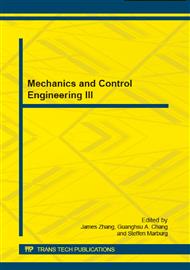p.58
p.63
p.70
p.79
p.85
p.93
p.98
p.102
p.113
Specifics of Mathematical Simulation and the Method of Modeling for Subway Tunnels Thermal Conditions
Abstract:
This paper contains the results of research, carried out with financial support from the Ministry of Education and Science of the Russian Federation and dedicated to improving the energy efficiency of Moscow subway facilities and creation of stations with "zero" external sources heat consumption. The paper presents a method of simulation of the thermal conditions for subway tunnels, which allows, overcoming the difficulties associated with the informative uncertainty of baseline data, as well as difficulties associated with the approximation of the external parameters. Advantage of this method is the fact that the usage of so-called "base" experimentally obtained information about the natural soil thermal conditions in this model, can partially take into account the whole range of factors, which have significant influence on the formation of the thermal regime of the tunnel but are almost impossible to be taken into account within the strict formulation of the problem today.
Info:
Periodical:
Pages:
85-92
Citation:
Online since:
December 2014
Price:
Сopyright:
© 2015 Trans Tech Publications Ltd. All Rights Reserved
Share:
Citation:


